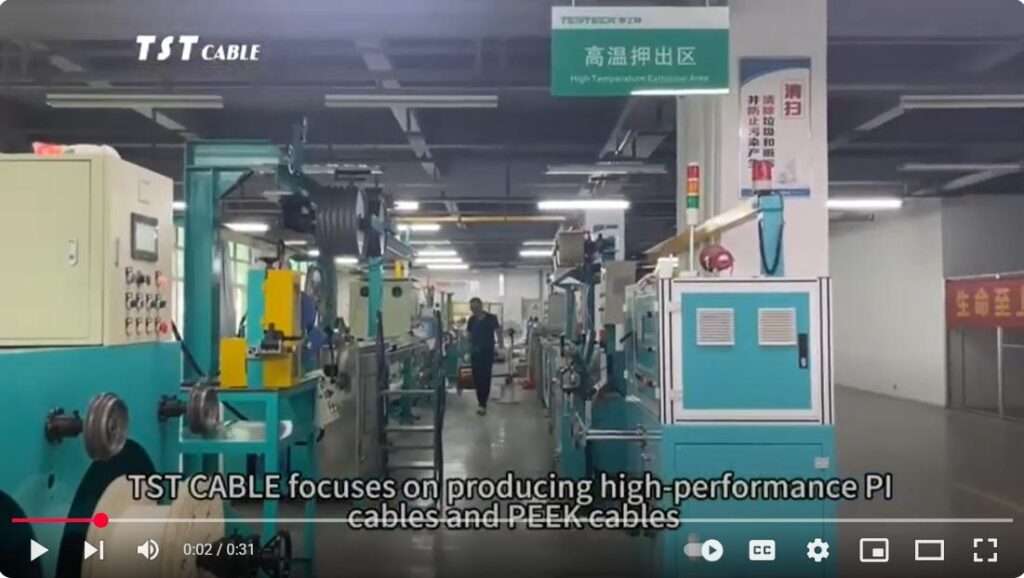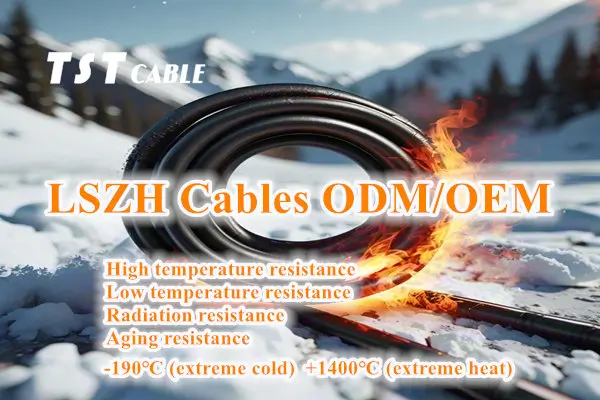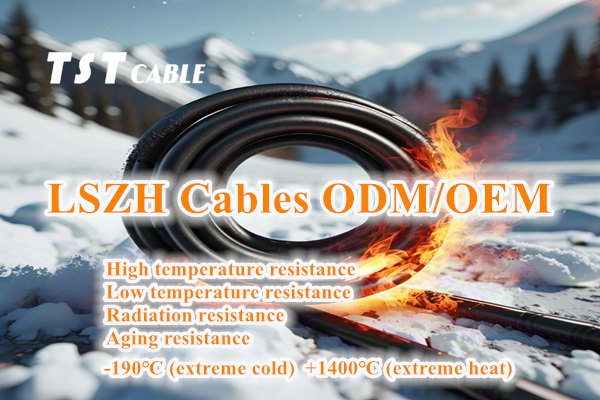When wiring around nuclear power equipment, it is crucial to select high-temperature resistant cables that can withstand extreme temperatures, considering the high-temperature environment generated by nuclear reactors and their auxiliary systems and the strict requirements for cable performance. 600℃ high-temperature resistant cables in this environment not only need to ensure the safety and stability of signal transmission and power supply, but also need to have radiation resistance and fire protection. The following is a detailed description of the application of this cable around nuclear power equipment:

Application Background of Nuclear Power Plant Cables
There are many high-temperature areas in nuclear power plants, such as reactor cooling systems, steam generators, turbines and other parts. Cables working in these places not only have to face high temperature challenges, but also need to deal with potential radioactive environments and possible fire risks. Therefore, choosing the right high-temperature resistant cables is crucial to ensure the safe operation of nuclear power plants. TST CABLES will take you to understand the characteristics and selection recommendations of nuclear power plant cables.
Characteristics of 600℃ high temperature resistant cable
- Material selection:
Conductor material: Nickel-chromium alloy (such as Inconel) or copper-nickel alloy is usually used as the conductor material. Such alloys not only have excellent electrical conductivity, but also have excellent high temperature resistance and corrosion resistance.
Insulation layer: Commonly used insulation materials include mica tape, glass fiber reinforced mica tape, etc., which can provide reliable electrical insulation protection under high temperature conditions.
Sheath material: Ceramic silicone rubber or polytetrafluoroethylene (PTFE) are common sheath material choices. They perform well in high temperature environments and have certain mechanical strength and chemical stability. - Wide temperature resistance range:
This type of cable is designed to have a wide operating temperature range and can withstand temperature changes from -60℃ to +600℃ or even higher, meeting the use requirements of nuclear power plants under various working conditions. - High mechanical strength:
The internal space of nuclear power plants is limited and there is vibration, so the cable needs to have good flexibility and tensile resistance to adapt to complex installation conditions. At the same time, the cable must also be able to resist external mechanical damage. - Strong anti-electromagnetic interference ability:
For some sensitive signal transmission, the cable may contain a metal shielding layer to effectively isolate external electromagnetic interference and ensure the accuracy of data transmission. - Good fire retardant performance:
In critical facilities such as nuclear power plants, cables must also have excellent fire retardant performance to prevent more serious safety accidents caused by accidental fires. The application of low-smoke halogen-free (LSZH) materials can reduce the release of toxic gases during fires. - Radiation resistance:
Especially in areas close to the core of the reactor, the cable must have a certain radiation resistance to ensure that its physical and electrical properties remain unchanged after long-term exposure to radioactive environments.
Application examples of nuclear power plant cables
- Reactor control system:
The sensors, actuators and other key components of the reactor control system are connected to the central control system through high-temperature resistant cables to ensure that the operating parameters of the reactor can be accurately controlled even under extremely high temperature conditions. - Safety system wiring:
The wiring of safety-related equipment such as the emergency shutdown system and the cooling system must use high-temperature resistant cables to ensure that these systems can still work normally in the event of an accident and ensure the safety of the nuclear power plant. - Steam generators and turbines:
The cables around steam generators and turbines need to withstand the influence of high-temperature steam. The use of high-temperature resistant cables helps maintain the normal operation of the system and avoid functional failure due to overheating. - Monitoring and alarm system:
Temperature sensors, pressure sensors, etc. are directly exposed to high-temperature areas. Their connecting cables must be able to withstand the corresponding temperature and ensure the reliability of signal transmission so as to detect and handle abnormal situations in time.
Precautions for cables in nuclear power plants
Correct selection: Select cables of appropriate specifications according to the specific temperature requirements of the actual application environment to ensure their long-term reliable operation.
Professional installation: Follow the installation guide provided by the manufacturer TST CABLES, pay attention to the minimum bending radius and maximum tension limit, and avoid damaging the cable structure. Especially in places such as nuclear power plants where safety requirements are extremely high, any improper operation may lead to serious consequences.
Regular inspection and maintenance: Although the high-temperature resistant cable is designed with long-term stability in mind, it still needs to be inspected regularly, especially for the exposed parts, to detect and handle possible aging or damage problems in time.
600℃ high temperature resistant cables play an indispensable role in the wiring around nuclear power equipment. They not only ensure safe and efficient communication between various key components, but also provide a solid foundation for the safety of the entire nuclear power plant. When selecting and using such cables, the above factors should be fully considered to ensure optimal performance. In addition, with the advancement of technology, the application of new materials and new technologies will further enhance the performance of such cables and meet the more stringent requirements of future nuclear power plants. If you have any needs for nuclear power plant cables, please email us.
Also available in:
English





